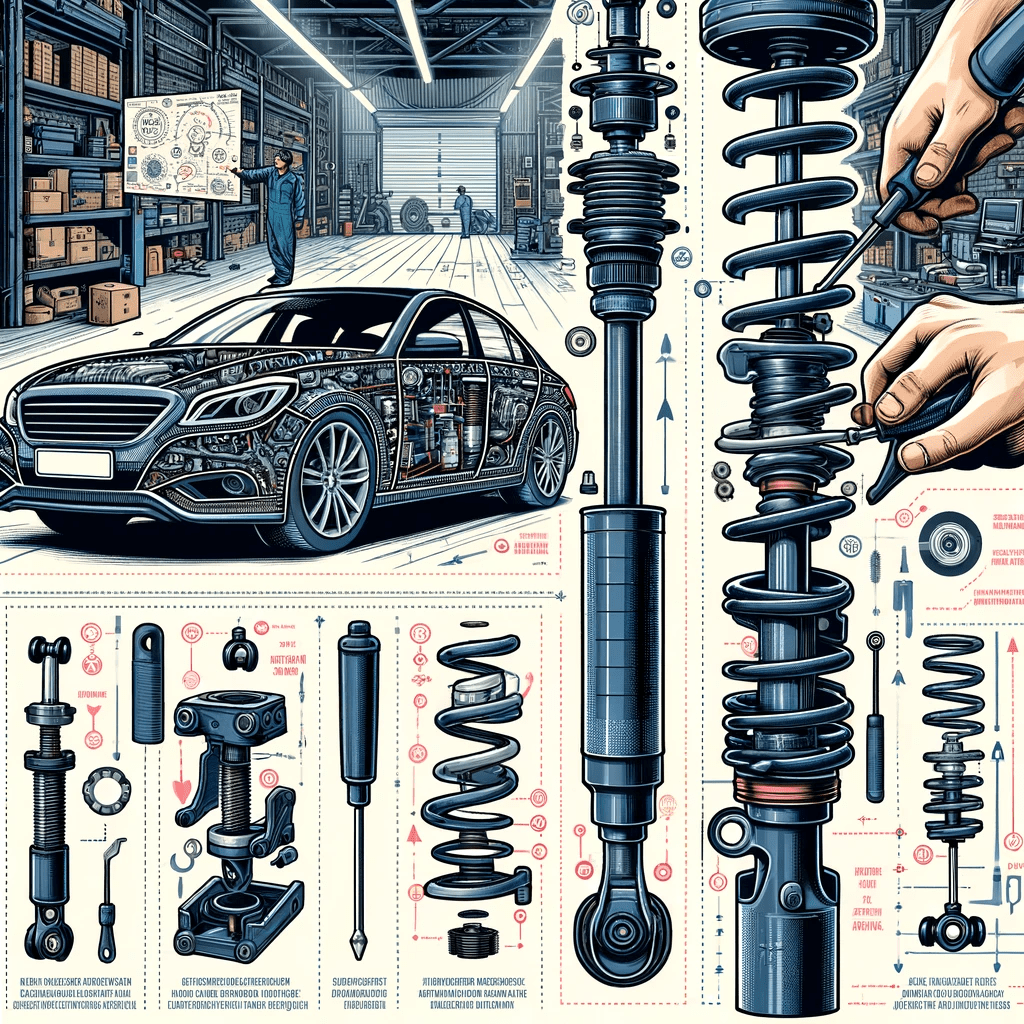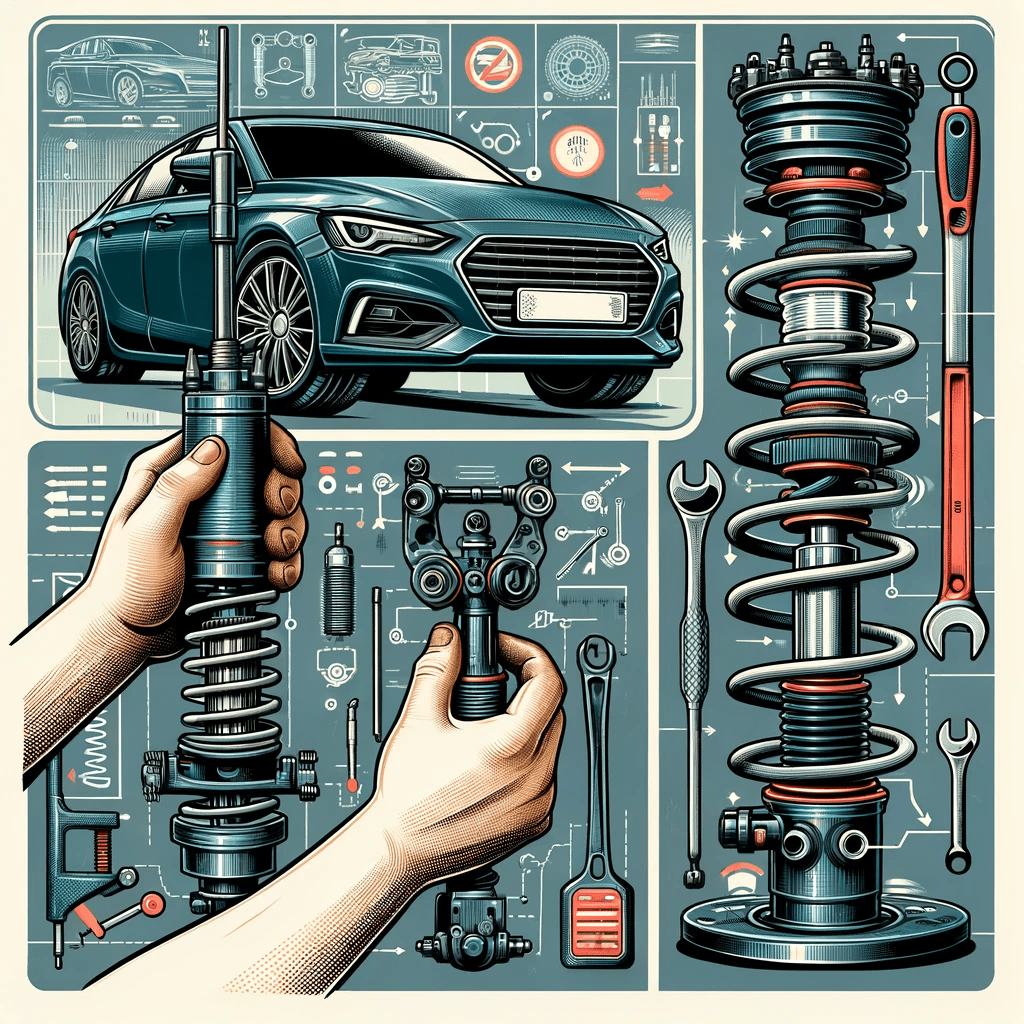Key Takeaways
- Purpose: Enhance ride comfort and handling.
- Types: Compression and rebound dampening.
- Adjustment Impact: Affects stability, comfort, and tire wear.
- DIY Approach: Feasible with basic knowledge and testing.
- Professional Tuning: Recommended for precision and safety.
- Related Components: Performance shock absorbers, anti-roll bars.
Dampening adjustments in vehicle suspension systems play a pivotal role in optimizing both ride comfort and handling dynamics. These adjustments, primarily involving the shock absorbers, can significantly alter the way your vehicle responds to road conditions and driving inputs.
Understanding Dampening Adjustments

Dampening in suspension refers to the control of the suspension’s movement through shock absorbers. There are two main types:
- Compression Dampening: Controls how the shock absorber compresses under load, managing the impact of bumps and potholes.
- Rebound Dampening: Regulates how the suspension returns to its normal position after compressing.
Effective dampening adjustments require a balance between these two, ensuring that the vehicle remains stable and comfortable under various driving conditions.
The Purpose of Dampening Adjustments
Adjusting the dampening in your vehicle’s suspension can lead to:
- Improved Stability: By controlling body roll and maintaining better contact with the road.
- Enhanced Comfort: By absorbing road imperfections more effectively.
- Optimized Handling: Making the vehicle more responsive to steering inputs and dynamic in corners.
For a comprehensive understanding of suspension tuning, visit Suspension Car Performance Tuning.

DIY vs. Professional Dampening Adjustments
- DIY Approach: For those with mechanical knowledge, DIY adjustments can be rewarding. However, it requires a good understanding of car dynamics and a willingness to experiment and test.
- Professional Tuning: For precision and safety, especially with complex suspension systems or for achieving specific performance goals, professional tuning is recommended.
Related Components and Enhancements
- Performance Shock Absorbers: Enhancing dampening often goes hand-in-hand with upgrading to performance shock absorbers.
- Anti-Roll Bars: To complement dampening adjustments, consider upgrading anti-roll bars for improved stability.
Comprehensive Guide to Suspension Components and Tuning
| Component/Aspect | Description | Relevant Link |
|---|---|---|
| Dampening Adjustments | Tailoring shock absorber settings for balance between handling and comfort. | Suspension Tuning |
| Compression Dampening | Controls shock absorption during suspension compression, key for absorbing impacts. | Basics of Suspension Mods |
| Rebound Dampening | Manages how suspension returns to its normal state, affecting stability and comfort. | Performance Shock Absorbers |
| DIY Tuning | Approach for enthusiasts with guidance on how to adjust suspension settings. | Suspension Car Performance Tuning |
| Professional Tuning | Recommended for complex systems and safety, ensuring precision in adjustments. | Coilovers vs Springs |
| Shock Absorbers | Integral to suspension tuning, affecting vehicle dynamics and comfort. | Best Shocks for Ford F150 4×4 |
| Anti-Roll Bars | Enhance stability and reduce body roll, complementing dampening adjustments. | Anti-Roll Bar Upgrades |
| Air Suspension Benefits | Offers adjustable ride height and load leveling, contributing to handling and comfort. | Air Suspension Benefits |
| CV Joint Symptoms | Understanding symptoms and diagnosing failures in car’s axle joint. | CV Joint Symptoms |
In summary, dampening adjustments are a key aspect of suspension tuning, directly influencing the ride quality and handling of a vehicle. Whether you’re a DIY enthusiast or prefer professional help, understanding and correctly setting dampening can significantly enhance your driving experience. For those looking to further explore suspension modifications, delving into components like coilovers and air suspension systems can provide additional avenues for optimization.